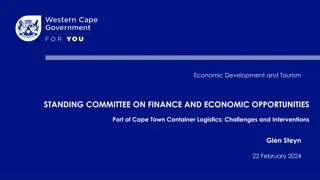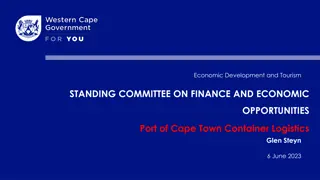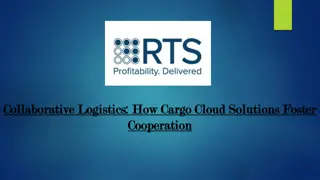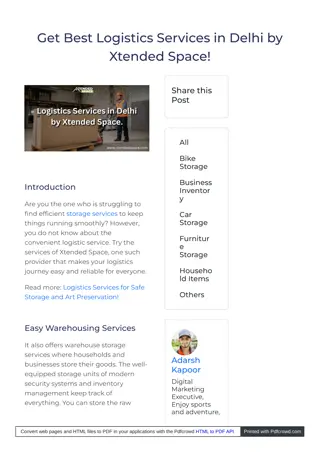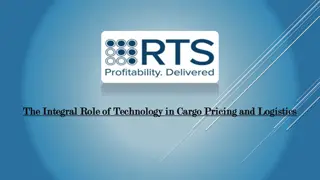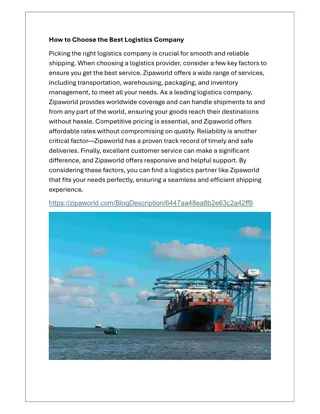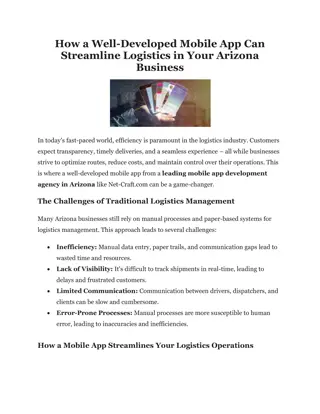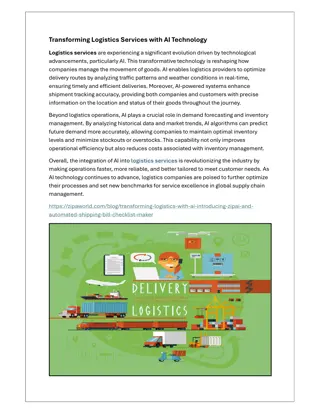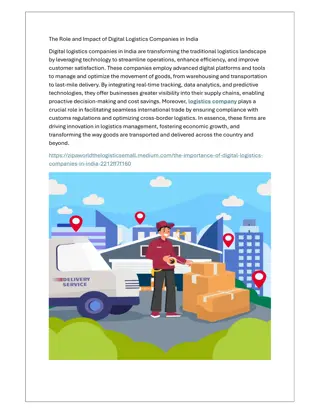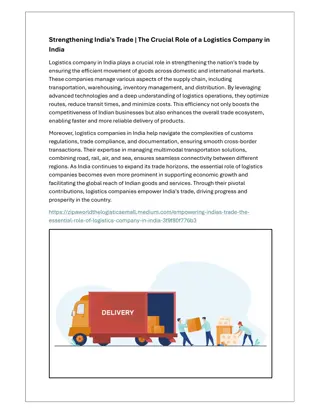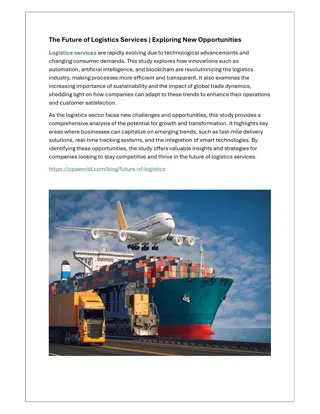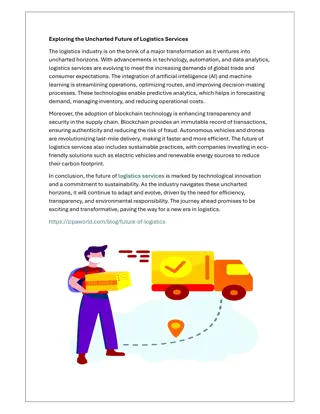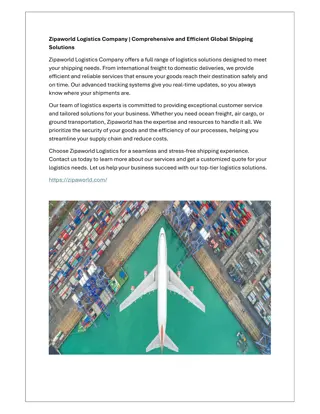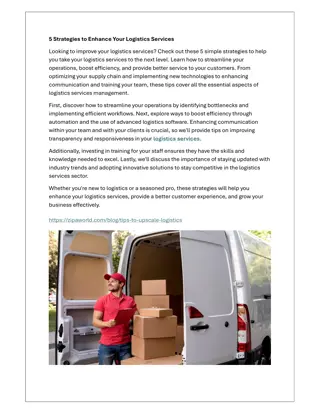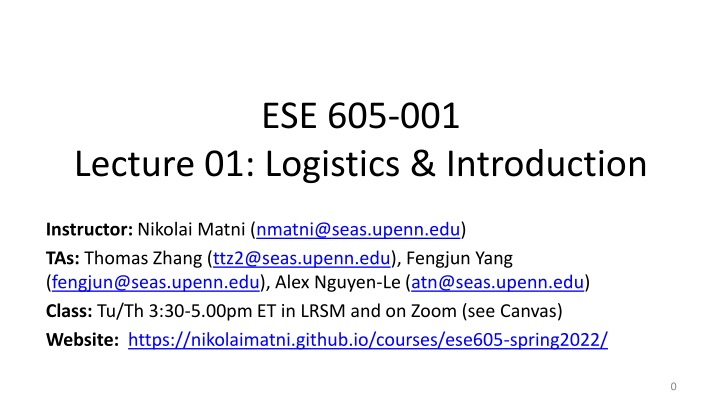
Convex Optimization Course at University of Pennsylvania
Join the ESE 605-001 course at University of Pennsylvania to learn about convex optimization and its applications in various fields. Explore topics like convex sets, functions, algorithms, and more with hands-on experience. Prerequisites include a strong foundation in math and familiarity with Matlab, Python, or Julia. Take a deep dive into solving convex optimization problems and gain the skills to apply these methods in research and real-world scenarios.
Download Presentation

Please find below an Image/Link to download the presentation.
The content on the website is provided AS IS for your information and personal use only. It may not be sold, licensed, or shared on other websites without obtaining consent from the author. If you encounter any issues during the download, it is possible that the publisher has removed the file from their server.
You are allowed to download the files provided on this website for personal or commercial use, subject to the condition that they are used lawfully. All files are the property of their respective owners.
The content on the website is provided AS IS for your information and personal use only. It may not be sold, licensed, or shared on other websites without obtaining consent from the author.
E N D
Presentation Transcript
ESE 605-001 Lecture 01: Logistics & Introduction Instructor: Nikolai Matni (nmatni@seas.upenn.edu) TAs: Thomas Zhang (ttz2@seas.upenn.edu), Fengjun Yang (fengjun@seas.upenn.edu), Alex Nguyen-Le (atn@seas.upenn.edu) Class: Tu/Th 3:30-5.00pm ET in LRSM and on Zoom (see Canvas) Website: https://nikolaimatni.github.io/courses/ese605-spring2022/ 0
Course description In this course, you will learn to recognize and solve convex optimization problems that arise in applications across engineering, statistics, operations research, and finance. Examples will be chosen to illustrate the breadth and power of convex optimization, ranging from systems and control theory, to estimation, data fitting, information theory, and machine learning. A tentative list, subject to change, of what we will cover includes: convex sets, functions, and optimization problems; the basics of convex analysis; least-squares, linear and quadratic programs, semidefinite programs, minimax, extremal volume, and other problems; optimality conditions, duality theory, theorems of alternatives, and applications; interior-point algorithms for solving convex optimization problems, and their complexity analysis; applications to signal processing, statistics and machine learning, control, digital and analog circuit design, and finance. 1
Course goals to give you the tools and skills needed to identify convex optimization problems that arise in applications to introduce the basic theory of convex optimization problems, concentrating on results that are useful in understanding, improving, and extending computational methods to give you a deep and foundational understanding of how such problems are solved, and hands on experience in solving them to give you the background needed to feel comfortable in applying these methods in their own research work and/or applications 2
Prerequisites This is a math intensive course. A solid foundation in linear algebra (at the level of Math 314), as well as comfort with analysis, probability, and statistics at an advanced undergraduate level is required. Mathematical maturity: if you have never written a mathematical proof before, this course will be a struggle. Familiarity with one of Matlab, Python, or Julia. There will be a modest amount of programming involved in the course & homework. Undergraduates need permission (if you are here, you have already spoken to me). 3
Material Textbook: free online book Convex Optimization by Boyd & Vandenberghe available at https://web.stanford.edu/~boyd/cvxbook/ Software: one of CVX (Matlab), CVXPY (Python), or Convex.jl (Julia), to write simple scripts. We refer to CVX, CVXPY, and Convex.jl collectively as CVX*. Additional resources: J. Renegar, A Mathematical View of Interior Point Methods for Convex Optimization, 1998 A. Ben-Tal and A. Nemirovski, Lectures on Modern Convex Optimization: Analysis, Algorithms, and Engineering Applications, SIAM, 2001 D. Bertsekas, A. Nedic, and A Ozdaglar, Convex Analysis and Optimization , 2003 L. El Ghaoui's EE227BT Lecture Notes 4
Administration Lectures: Tu/Th 3:30-5:00pm in LRM and on Zoom (check Canvas for link/passcode) Course website: all lecture slides and homework will be posted on https://nikolaimatni.github.io/courses/ese605-spring2022/index.html. Class recordings and annotated + additional notes will be posted on canvas https://canvas.upenn.edu/courses/1637079. Canvas (Gradescope): all homework assignments to be turned in using canvas portal, https://canvas.upenn.edu/courses/1637079. Piazza: https://piazza.com/class/ky09sgvfdx85eb, for discussion and clarifications, sign up at link above, passcode is provided on canvas and in class. Office hours: NM after class, TZ Fri 12-2pm, FY Wed 8-10am, ANL Mon 6-8pm, all ET. Please let us know if you are unable to make it to any of these due to conflicts or time-zone issues. Zoom links and passcodes will be posted to Canvas. 5
Grading Homework (70%): there will be 5 homework assignments, handed out on Tuesday, and due three weeks later on Friday by 5pm (except for the final assignment which will be due the last day of class). The homework assignments must be LateXed and submitted on Canvas via Gradescope. Please use this LaTeX template we ask that you write out detailed and rigorous solutions. You will be given 6 free late days which you may use as you please throughout the semester, after which no late assignments will be accepted. Each homework problem will be graded on a scale of 0-4. Final take-home exam (30%): there will be a 24 hour final take-home exam scheduled during the final exam period. Please refer to the Stanford EE364a offering of this course for an idea of what the final exam will look like, as well as the logistics of how it will be administered. 6
Academic Integrity Code of Academic Integrity: All students are expected to adhere to the University s Code of Academic Integrity. You are encouraged to collaborate with your peers when working on your homework problems, as well as consult other materials. However, when you write up your own solutions, these materials (including your friends!) should be left aside, and you should write up solutions from scratch. You should also cite all resources used and disclose all collaborations in your submission. Collaboration is different from cheating. While the former is encouraged, the latter is defined as attempting, abetting, or using unauthorized assistance (e.g., a knowledgeable senior who is not taking the class) or material (e.g., online code). Some other examples of cheating include: copying problem sets/exams, handing in someone else s work as your own, and plagiarism. This will not be tolerated and will be reported to the university. Citing the solution manual is not a workaround to this policy! 7

